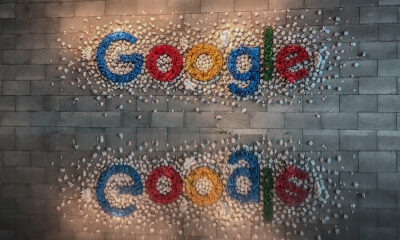SEO
19 List Building Techniques For SaaS Link Building

A SaaS company’s link building techniques are similar to other business types.
Still, the list building methods are unique because of the type of content on publisher websites and the content resources a SaaS business possesses.
SaaS companies tend to have unique content resources, including engineering team insights, unique data, subject matter expert (SME) clients, competitor comparison pages, and a wide range of blog topics.
Using these resources, a company can secure brand mentions and links on sites that cover topics or content about:
- Software alternatives or comparison articles.
- SME listicles.
- Internal SME quotes for content creators.
- Statistical roundup articles to share SaaS clients or industry data.
- SME guest posts.
List building is the process of matching these internal resources to external entities that will benefit from that resource and finding relevant prospects.
As I explain in my SEJ article, A Guide To Linkable Assets For Effective Link Building, linkable assets will be essential to most link building campaigns.
If the site has no linkable content, then use this guide to start planning.
Although the techniques below can be used across other industries, they are currently highly effective in SaaS link building.
Now that you have content, start identifying prospective link lists using the following process.
Universal List Building Process
This process can be used for creating lists for many link building techniques. Use the following list building template with the process and methods below to start link building today.
However, choose the link research tool or technique that works best for your niche. Semrush, Ahrefs, Moz, Majestic, or a search operator in Google can yield similar results.
Step 1: Seed A List Of Competitors And Keywords By Campaign Type
- Select the type of list to build from the campaign options below, or competitor analysis. Add those to the proven link building models tab in the template (see screenshot below).
- Create a seed list of keywords.
- Identify direct or keyword competitors.
Step 2: List Identification
Create a list: Select which of these three methods.
Google Search Operator
Direct SEO Tool List
(Check out all the options here.)
- Semrush.
- Ahrefs.
- Moz.
- Majestic.
Bulk List Building Tools
Search for lists.
Step 3: List Segmentation & Filtering
Narrow the list to blogs that link to the competitor using default and advanced filters.
Default Tool Filters
- Filter by topical relevancy first.
- Metrics filter: If the list has a lot of low-quality sites, then narrow the list based on the tools’ domain-level score (e.g., Domain Rating in Ahrefs or DA in Moz).
Content-Need Segmentation
Narrow the list by:
- Content type: Each tool is a “content-type” filter to narrow the list to articles.
- Placement: Select “content.”
- Language: select your preferred language.
- Advanced filter: Find in “text.”
Export
Manually Review & Segment Sites Based On
- Topics or methods to secure links (e.g., pitch the new survey about cyber security).
- Quality of content and site.
Add The Targeted Site List To The “List Tracker” Tab Of The Template
 Image created by author, July 2023
Image created by author, July 2023Pro tip: Use a search operator in Pitchbox to narrow the list beyond the default campaign settings.
Use this process and the following techniques to create massive lists of prospective sites.
Competitor Backlink Lists
Competitor list building is centered around researching your competitors’ backlink profiles. You can quickly create a target list for your link building campaign by identifying the websites linking to your competitor’s content.
Writing an article about “software alternatives,” “best of,” or “top tools” is an easy way to create a valuable resource for readers. These topics are one reason why so many listicle articles exist.
These are great opportunities to generate links if they mention competitors’ brands but not yours.
1. Find Software Alternatives
{company name} intitle:alternative
For example, an SEO software like Semrush might search for:
Ahrefs intitle:alternatives
2. To Find Lists Of Competitors, Use The Search Operators
{industry name + software} intitle:tools
{keyword} intitle:best of
{keyword} intitle:top
By modifying the search operator to focus on company blogs, the list can filter out major publications that may need to update their list.
{keyword} Inurl:blog intitle:best of
Although competitor link building typically yields some targeted links, a link profile should include diverse and high-authority placements. Passive source lists can provide that diversity.
Passive Content Creator Source Lists
Journalists and bloggers constantly search for sources, experts, and valuable content.
Become the source when they are searching.
HARO (Help A Reporter Out) was the only resource for a long time, but you can also use Qwoted, ProfNet, and #journorequest (Twitter hashtag) to become a source.
After creating free or paid profiles for these sites, the request lists range from marketing case studies to business management or industry-specific requests.
Look for other trends in the topics requests to determine other sources within the company.
For example, HARO has a lot of requests for AI or generative AI sources. These requests can be an opportunity to use an SME from the engineering, development, or product teams as a source.
Building these lists may seem simple, but it demands a strategic approach to maximize your chances of being picked as a source.
Here are three lists to build:
3. Marketing Team List
Set up the marketing team as sources. HARO lists general “business” topics like marketing-specific content and case studies.
4. Leadership Team List
Include your leadership team as sources. These individuals often have years of experience and unique perspectives that can provide depth to a content creator’s story.
Plus, quotes from company leaders often hold more weight.
5. Industry Subject Matter Experts (SMEs)
These individuals within your organization or network have specialized knowledge in specific areas of your industry.
Content creators often seek experts who can provide in-depth insights on specific topics.
A SaaS company will have engineering or development team members that can be excellent sources of technical information.
However, content creators also search other areas for data or sources. As you’ll see below, content creators also go to Google and Reddit in their search.
List Building For Earned Links
Earning links doesn’t require building site lists for outreach, but rather lists of keywords or communities content creators are searching for information on a topic.
Although these creators use many sources for research, they heavily use Google and Reddit to get direction, answer questions, or provide data.
Content creators are using research hubs on subreddits.
Keyword Research Lists
Instead of building a list of sites, this technique builds a list of targeted keywords for the content to rank.
6. Data Keywords
Create lists of keywords that indicate research-based queries. These often include terms like “statistics” or “data.”
By crafting content around these keywords, you stand a higher chance of earning backlinks from journalists or bloggers searching for data-driven insights in your industry.
Examples include:
- [industry] statistics [year].
- [topic] data (e.g., Christmas shopping data).
- [industry | keyword] trends.
7. Researching New Topics
Many writers create content about topics that are new to them. Thus they will search for very top-of-funnel terms like “what is” or “what are.”
8. Book Summary Search
Create a summary or outline of a book on a relevant topic.
Create a list of “[book] + summary” keywords. E.g., “product-led SEO book summary.”
9. Expert Search
Search for an expert with “top [topic] experts” for listicles. Get listed on those listicles.
10. Trendy Topics
Find keywords for trending topics, and become the expert. With new topics, SMEs will be limited.
Thus secure placements on roundup articles about experts in trending topics.
Tips:
- If your content is an order of magnitude (e.g., 10X better data quality) better than the top pieces, then build a list of referring domains that link to the top-ranking content. Use this as a primer list to do outreach and secure initial links.
- Use the People Also Ask questions to identify topics to write about.
Subreddit lists
Content creators can use Reddit to learn more about their research, as subreddits exist for almost any category.
When creating these community lists, look for trends, not just one community. As you can see below, the “helpful sources” category has multiple similar subreddits.
Depending on the company’s niche, search for topical trends like “cyber security innovation threads.”
Here are three categories to build lists around, but research your niche.
11. General News
Create a list of general news subreddits that can provide a list for sharing quotes or unique data on a trending topic. Examples include /r/news and /r/worldnews.
12. Helpful Sources
Create a list of threads that posts data or helpful content around a topic. Some examples are /r/explainlikeimfive/, /r/dataisbeautiful, or /r/indepthstories.
13. Innovation Threads
In SaaS, if the product is innovative or leadership has a value-add take on a trending topic, Reddit has threads. For example, /r/Futurology has content on AI or advanced technology topics.
Building lists are easy to write about but difficult to execute. Use the following tips to search and filter down the entire list.
Tips to filter Reddit interactions for a targeted site list.
- Subreddit Research: Use the Reddit search feature to find subreddits related to your industry or niche. Each subreddit is a community with its own rules and preferences. Understand these before you post.
- Look for query-based threads: Search for threads where users ask questions or seek information about your industry or niche. These results yield great opportunities to provide a helpful response and include a relevant link to your content.
- Host an AMA (Ask Me Anything) session: If you’re an expert in a particular field, you can host an AMA session. This focus allows you to share a lot of links to your content. Ensure your AMA provides value and isn’t just self-promotion.
- Join discussions: Engage in discussions in your targeted subreddits. You can share if your content is relevant and provides more insight or a different perspective.
- Share unique, high-quality content: Reddit users appreciate unique, high-quality content. If your content meets this standard, you’re more likely to earn upvotes, comments, and potentially backlinks.
Earning links can be time-consuming and resource intensive, but the next section covers a technique that any marketer can execute: guest posting.
High-Authority Guest Posting Lists
A “high authority guest post” refers to a blog or article written by a guest author and posted on a highly reputable, authoritative website.
The credibility and recognition of the host website are expected to increase the reach, credibility, and impact of the guest post. An executive, manager, or company leader will find more opportunities for the highest authority contributions.
These team members can secure contributions to major publications or company blogs. A strong thought leader can contribute to sites like Harvard Business Review or Fast Company.
However, guest posts on relevant company blogs are available in higher volume.
14. Major Publications Contributions
To build a list of major publications that will provide a byline, search for lists in Google with search operators.
A final list of these publications will be short, as many sites publish lists of them with the contributor guidelines.
To find these lists, search in Google with the following search operator, and
{keyword} -guidelines intitle:"contributor" intext:"publication"
15. Niche Company Blogs
Some websites also allow for a guest article contribution. For example, HubSpot allows experts to create and publish on the blog.
To find these blogs, search in Google for a variation of the search operators:
{keyword} intitle:"contributor"
Although this operator uses “contributor,” swap that word out for various terms to expand the list:
- Guest post.
- Guest contributor.
- Write for us.
- Blogging guidelines.
- Contributor guidelines.
- Submit a post.
Skyscraper Technique List Building
The Skyscraper Technique is a link building technique where you find existing high-performing content on a topic related to your industry, create something even better, and then reach out to the right people so they can link to your superior content.
It was developed by Brian Dean from Backlinko, and it’s a highly effective method of acquiring high-quality backlinks.
16. Links To Original Content
This list building method is similar to competitor analysis. Use Ahrefs, Semrush, Moz, or Majestic’s backlink reports to identify links directly pointing to the URL of the topic content.
However, this process is manual, as you have to check each domain’s links individually. Using Pitchbox can make this process more scalable with the “URL backlinks” integration campaign.
17. Site & Authors That Have Covered The Topic
Use a simple Google search to find articles or blog posts about your chosen topic.
Look for articles ranking on the first few pages of Google, as these are likely high-authority sites.
You can also use Google’s ‘site:’ operator to search specific websites for relevant content.
Pro tip: Exclude the keyword from the title to find content that mentions the topic but doesn’t cover it deeply in a whole article:
-intitle:{keyword} intext:{keyword}
The Skyscraper has become very popular in the SaaS space, as have link exchanges.
Link Exchange Lists
Link exchanges refer to the process where two websites agree to link to each other to improve search engine visibility. However, think of these as resource exchanges instead of link exchanges.
In a resource exchange, each website shares informational content with each other’s audience. These assets include blog posts, studies, or guides.
18. Identify Companies For Link Exchanges
Not all, but many companies use a /blog or /resource folder structure. This common denominator can reduce the time to build a list, as these variables can be used to design search operators.
However, some company blogs exclude the /blog from the article’s URL. Thus the blog will be example.com/example-article instead of /blog/example-article.
For the latter, use the search operator
inurl:"blog" intitle:{keyword}
19. Non-competing Article Exchanges
Find link exchange opportunities from articles that cover the topic but are not trying to rank for the exact keywords. Filter these out by excluding them.
inurl:"blog" intext:{keyword} -intitle:{keyword}
Conclusion
Link building for SaaS companies requires leveraging unique content resources and implementing strategic techniques.
Among these, the utilization of competitor backlink lists, passive content creator source lists, earned links, high-authority guest posting, and the Skyscraper Technique are significantly effective.
With meticulous attention to creating valuable content and a dedicated focus on list-building processes, SaaS companies can significantly improve their link-building efforts.
Understanding the link building landscape is not merely a desirable skill but an essential aspect of SaaS marketing.
Future efforts should focus on continually refining these strategies in response to evolving industry trends and market needs.
More resources:
Featured Image: Sammby/Shutterstock
SEO
Google Rolls Out New ‘Web’ Filter For Search Results

Google is introducing a filter that allows you to view only text-based webpages in search results.
The “Web” filter, rolling out globally over the next two days, addresses demand from searchers who prefer a stripped-down, simplified view of search results.
Danny Sullivan, Google’s Search Liaison, states in an announcement:
“We’ve added this after hearing from some that there are times when they’d prefer to just see links to web pages in their search results, such as if they’re looking for longer-form text documents, using a device with limited internet access, or those who just prefer text-based results shown separately from search features.”
We’ve added this after hearing from some that there are times when they’d prefer to just see links to web pages in their search results, such as if they’re looking for longer-form text documents, using a device with limited internet access, or those who just prefer text-based…
— Google SearchLiaison (@searchliaison) May 14, 2024
The new functionality is a throwback to when search results were more straightforward. Now, they often combine rich media like images, videos, and shopping ads alongside the traditional list of web links.
How It Works
On mobile devices, the “Web” filter will be displayed alongside other filter options like “Images” and “News.”
If Google’s systems don’t automatically surface it based on the search query, desktop users may need to select “More” to access it.
 Screenshot from: twitter.com/GoogleSearchLiaison, May 2024.
Screenshot from: twitter.com/GoogleSearchLiaison, May 2024.More About Google Search Filters
Google’s search filters allow you to narrow results by type. The options displayed are dynamically generated based on your search query and what Google’s systems determine could be most relevant.
The “All Filters” option provides access to filters that are not shown automatically.
Alongside filters, Google also displays “Topics” – suggested related terms that can further refine or expand a user’s original query into new areas of exploration.
For more about Google’s search filters, see its official help page.
Featured Image: egaranugrah/Shutterstock
SEO
Why Google Can’t Tell You About Every Ranking Drop

In a recent Twitter exchange, Google’s Search Liaison, Danny Sullivan, provided insight into how the search engine handles algorithmic spam actions and ranking drops.
The discussion was sparked by a website owner’s complaint about a significant traffic loss and the inability to request a manual review.
Sullivan clarified that a site could be affected by an algorithmic spam action or simply not ranking well due to other factors.
He emphasized that many sites experiencing ranking drops mistakenly attribute it to an algorithmic spam action when that may not be the case.
“I’ve looked at many sites where people have complained about losing rankings and decide they have a algorithmic spam action against them, but they don’t. “
Sullivan’s full statement will help you understand Google’s transparency challenges.
Additionally, he explains why the desire for manual review to override automated rankings may be misguided.
Two different things. A site could have an algorithmic spam action. A site could be not ranking well because other systems that *are not about spam* just don’t see it as helpful.
I’ve looked at many sites where people have complained about losing rankings and decide they have a…
— Google SearchLiaison (@searchliaison) May 13, 2024
Challenges In Transparency & Manual Intervention
Sullivan acknowledged the idea of providing more transparency in Search Console, potentially notifying site owners of algorithmic actions similar to manual actions.
However, he highlighted two key challenges:
- Revealing algorithmic spam indicators could allow bad actors to game the system.
- Algorithmic actions are not site-specific and cannot be manually lifted.
Sullivan expressed sympathy for the frustration of not knowing the cause of a traffic drop and the inability to communicate with someone about it.
However, he cautioned against the desire for a manual intervention to override the automated systems’ rankings.
Sullivan states:
“…you don’t really want to think “Oh, I just wish I had a manual action, that would be so much easier.” You really don’t want your individual site coming the attention of our spam analysts. First, it’s not like manual actions are somehow instantly processed. Second, it’s just something we know about a site going forward, especially if it says it has change but hasn’t really.”
Determining Content Helpfulness & Reliability
Moving beyond spam, Sullivan discussed various systems that assess the helpfulness, usefulness, and reliability of individual content and sites.
He acknowledged that these systems are imperfect and some high-quality sites may not be recognized as well as they should be.
“Some of them ranking really well. But they’ve moved down a bit in small positions enough that the traffic drop is notable. They assume they have fundamental issues but don’t, really — which is why we added a whole section about this to our debugging traffic drops page.”
Sullivan revealed ongoing discussions about providing more indicators in Search Console to help creators understand their content’s performance.
“Another thing I’ve been discussing, and I’m not alone in this, is could we do more in Search Console to show some of these indicators. This is all challenging similar to all the stuff I said about spam, about how not wanting to let the systems get gamed, and also how there’s then no button we would push that’s like “actually more useful than our automated systems think — rank it better!” But maybe there’s a way we can find to share more, in a way that helps everyone and coupled with better guidance, would help creators.”
Advocacy For Small Publishers & Positive Progress
In response to a suggestion from Brandon Saltalamacchia, founder of RetroDodo, about manually reviewing “good” sites and providing guidance, Sullivan shared his thoughts on potential solutions.
He mentioned exploring ideas such as self-declaration through structured data for small publishers and learning from that information to make positive changes.
“I have some thoughts I’ve been exploring and proposing on what we might do with small publishers and self-declaring with structured data and how we might learn from that and use that in various ways. Which is getting way ahead of myself and the usual no promises but yes, I think and hope for ways to move ahead more positively.”
Sullivan said he can’t make promises or implement changes overnight, but he expressed hope for finding ways to move forward positively.
Featured Image: Tero Vesalainen/Shutterstock
SEO
56 Google Search Statistics to Bookmark for 2024

If you’re curious about the state of Google search in 2024, look no further.
Each year we pick, vet, and categorize a list of up-to-date statistics to give you insights from trusted sources on Google search trends.
- Google has a web index of “about 400 billion documents”. (The Capitol Forum)
- Google’s search index is over 100 million gigabytes in size. (Google)
- There are an estimated 3.5 billion searches on Google each day. (Internet Live Stats)
- 61.5% of desktop searches and 34.4% of mobile searches result in no clicks. (SparkToro)
- 15% of all Google searches have never been searched before. (Google)
- 94.74% of keywords get 10 monthly searches or fewer. (Ahrefs)
- The most searched keyword in the US and globally is “YouTube,” and youtube.com gets the most traffic from Google. (Ahrefs)
- 96.55% of all pages get zero search traffic from Google. (Ahrefs)
- 50-65% of all number-one spots are dominated by featured snippets. (Authority Hacker)
- Reddit is the most popular domain for product review queries. (Detailed)
- Google is the most used search engine in the world, with a mobile market share of 95.32% and a desktop market share of 81.95%. (Statista)


- Google.com generated 84.2 billion visits a month in 2023. (Statista)
- Google generated $307.4 billion in revenue in 2023. (Alphabet Investor Relations)
- 63.41% of all US web traffic referrals come from Google. (SparkToro)
- 92.96% of global traffic comes from Google Search, Google Images, and Google Maps. (SparkToro)
- Only 49% of Gen Z women use Google as their search engine. The rest use TikTok. (Search Engine Land)
- 58.67% of all website traffic worldwide comes from mobile phones. (Statista)
- 57% of local search queries are submitted using a mobile device or tablet. (ReviewTrackers)


- 51% of smartphone users have discovered a new company or product when conducting a search on their smartphones. (Think With Google)
- 54% of smartphone users search for business hours, and 53% search for directions to local stores. (Think With Google)
- 18% of local searches on smartphones lead to a purchase within a day vs. 7% of non-local searches. (Think With Google)
- 56% of in-store shoppers used their smartphones to shop or research items while they were in-store. (Think With Google)
- 60% of smartphone users have contacted a business directly using the search results (e.g., “click to call” option). (Think With Google)
- 63.6% of consumers say they are likely to check reviews on Google before visiting a business location. (ReviewTrackers)
- 88% of consumers would use a business that replies to all of its reviews. (BrightLocal)
- Customers are 2.7 times more likely to consider a business reputable if they find a complete Business Profile on Google Search and Maps. (Google)
- Customers are 70% more likely to visit and 50% more likely to consider purchasing from businesses with a complete Business Profile. (Google)
- 76% of people who search on their smartphones for something nearby visit a business within a day. (Think With Google)
- 28% of searches for something nearby result in a purchase. (Think With Google)
- Mobile searches for “store open near me” (such as, “grocery store open near me” have grown by over 250% in the last two years. (Think With Google)
- People use Google Lens for 12 billion visual searches a month. (Google)
- 50% of online shoppers say images helped them decide what to buy. (Think With Google)
- There are an estimated 136 billion indexed images on Google Image Search. (Photutorial)
- 15.8% of Google SERPs show images. (Moz)
- People click on 3D images almost 50% more than static ones. (Google)
- More than 800 million people use Google Discover monthly to stay updated on their interests. (Google)
- 46% of Google Discover URLs are news sites, 44% e-commerce, 7% entertainment, and 2% travel. (Search Engine Journal)
- Even though news sites accounted for under 50% of Google Discover URLs, they received 99% of Discover clicks. (Search Engine Journal)


- Most Google Discover URLs only receive traffic for three to four days, with most of that traffic occurring one to two days after publishing. (Search Engine Journal)
- The clickthrough rate (CTR) for Google Discover is 11%. (Search Engine Journal)
- 91.45% of search volumes in Google Ads Keyword Planner are overestimates. (Ahrefs)
- For every $1 a business spends on Google Ads, they receive $8 in profit through Google Search and Ads. (Google)
- Google removed 5.5 billion ads, suspended 12.7 million advertiser accounts, restricted over 6.9 billion ads, and restricted ads from showing up on 2.1 billion publisher pages in 2023. (Google)
- The average shopping click-through rate (CTR) across all industries is 0.86% for Google Ads. (Wordstream)
- The average shopping cost per click (CPC) across all industries is $0.66 for Google Ads. (Wordstream)
- The average shopping conversion rate (CVR) across all industries is 1.91% for Google Ads. (Wordstream)
- 58% of consumers ages 25-34 use voice search daily. (UpCity)
- 16% of people use voice search for local “near me” searches. (UpCity)
- 67% of consumers say they’re very likely to use voice search when seeking information. (UpCity)
- Active users of the Google Assistant grew 4X over the past year, as of 2019. (Think With Google)
- Google Assistant hit 1 billion app installs. (Android Police)
- AI-generated answers from SGE were available for 91% of entertainment queries but only 17% of healthcare queries. (Statista)
- The AI-generated answers in Google’s Search Generative Experience (SGE) do not match any links from the top 10 Google organic search results 93.8% of the time. (Search Engine Journal)
- Google displays a Search Generative element for 86.8% of all search queries. (Authoritas)


- 62% of generative links came from sources outside the top 10 ranking organic domains. Only 20.1% of generative URLs directly match an organic URL ranking on page one. (Authoritas)
- 70% of SEOs said that they were worried about the impact of SGE on organic search (Aira)
Learn more
Check out more resources on how Google works:
-

 PPC7 days ago
PPC7 days agoHow the TikTok Algorithm Works in 2024 (+9 Ways to Go Viral)
-

 SEO6 days ago
SEO6 days agoHow to Use Keywords for SEO: The Complete Beginner’s Guide
-

 MARKETING7 days ago
MARKETING7 days agoHow To Protect Your People and Brand
-

 MARKETING4 days ago
MARKETING4 days agoAdvertising on Hulu: Ad Formats, Examples & Tips
-

 MARKETING1 day ago
MARKETING1 day ago18 Events and Conferences for Black Entrepreneurs in 2024
-

 MARKETING5 days ago
MARKETING5 days agoUpdates to data build service for better developer experiences
-

 MARKETING6 days ago
MARKETING6 days agoThe Ultimate Guide to Email Marketing
-

 WORDPRESS4 days ago
WORDPRESS4 days agoBest WordPress Plugins of All Time: Updated List for 2024















